The Association of British Counties would like to wish all of our supporters a very Happy New Year. We finish off 2023 with a look back at some of the highlights of year.
ABC exists to promote and celebrate the historic counties and their role in our culture, heritage and geography. We do this by all and any means we can! In 2023 we have been involved in promoting county flags, county days and county border signage; promoting the geography of the historic counties as the standard general-purpose geography for the UK; encouraging the use of the historic counties by heritage and tourism organisations; and lobbying for administrative terminology that draws a a clear distinction between administrative entities and the historic counties.
County Flags
Over the last few years county flags have become an increasingly common sight on flag poles, bumper stickers, sporting events, festivals, marches, food packaging etc. In 2023 they were even a specialist subject on Mastermind! Four new county flags were registered with the Flag Institute in 2023: Aberdeenshire, Banffshire, Berwickshire and Morayshire. This brings the number of historic counties in Scotland included in the UK Flag Registry to ten. All of the historic counties of England have a flag in the Flag Registry. There are still six historic counties in Wales awaiting a flag.


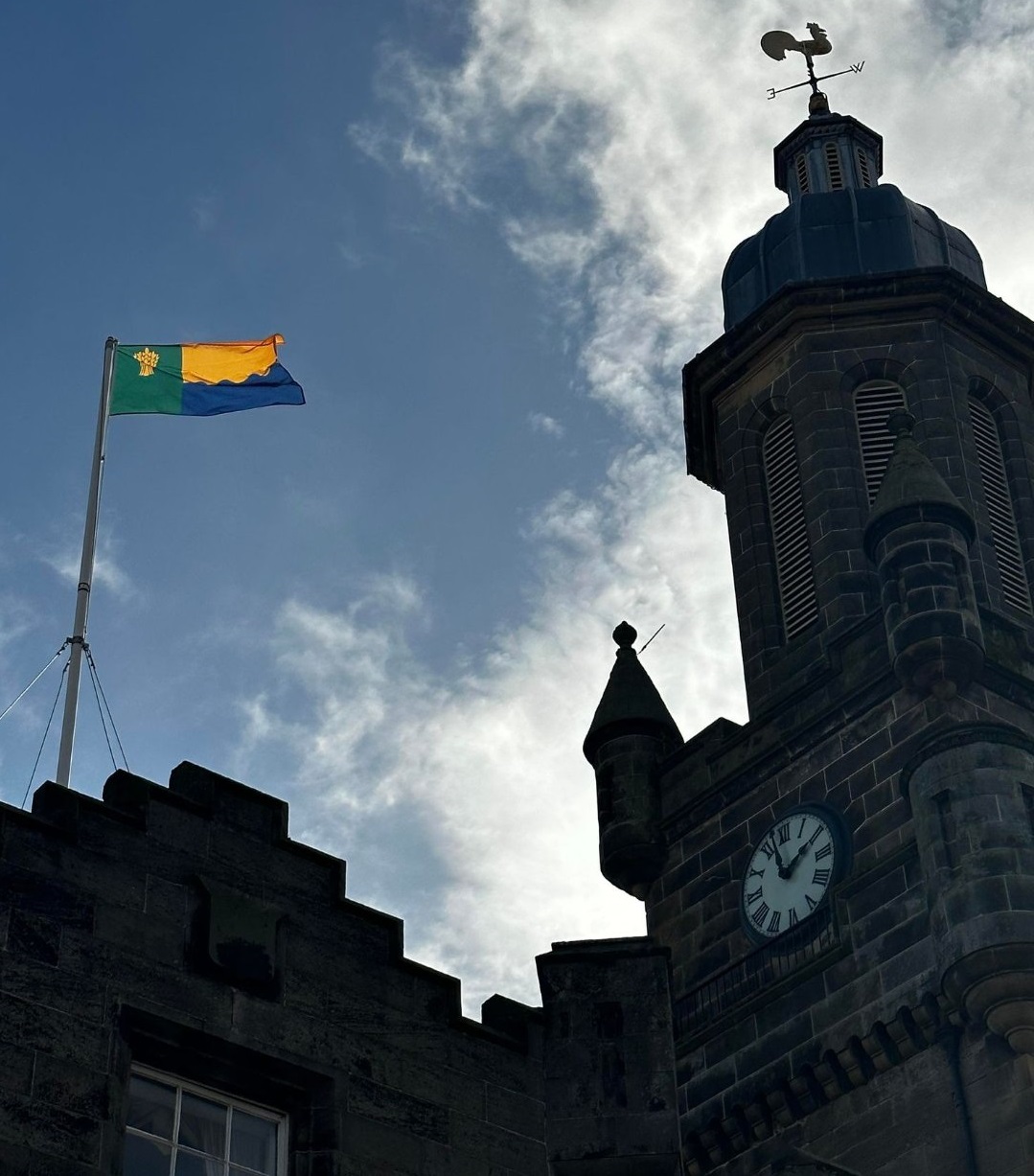

Historic County Flags Day on 23rd July 2023 saw another spectacular display of county flags across the country, not least in Parliament Square where the flags were flown for the whole week. It is gratifying to have the Government’s continuing support for Historic County Flags Day.

It is also gratifying to see local authorities joining in with the celebration. South Tyneside Council joined in the celebration for the first time in 2023, flying the County Durham flag from South Shields Town Hall.

County Days
Around 25 historic counties now have a county day which has a significant degree of support. A dozen or so are major events: Bedfordshire, Cornwall, Derbyshire, Devon, Hampshire, Lancashire, Lincolnshire, Somerset, Middlesex, Norfolk, Sussex, Suffolk and Yorkshire. Another 10 or so are growing, including Cheshire, County Durham, Essex, Kent, Nottinghamshire, Shropshire, Surrey and Wiltshire. Huge thanks for the many county day celebrations in 2023 are due to Friends of Real Lancashire, Yorkshire Riding Society, the Yorkshire Society, Saddleworth White Rose Society, Middlesex Heritage, Friends of Bedfordshire Society, Sussex Association, Somerset Day, Somerset Guardians, Hetton Town Council, BBC Kent, BBC Sussex, Department for Levelling-up, Housing and Communities and many, many others….



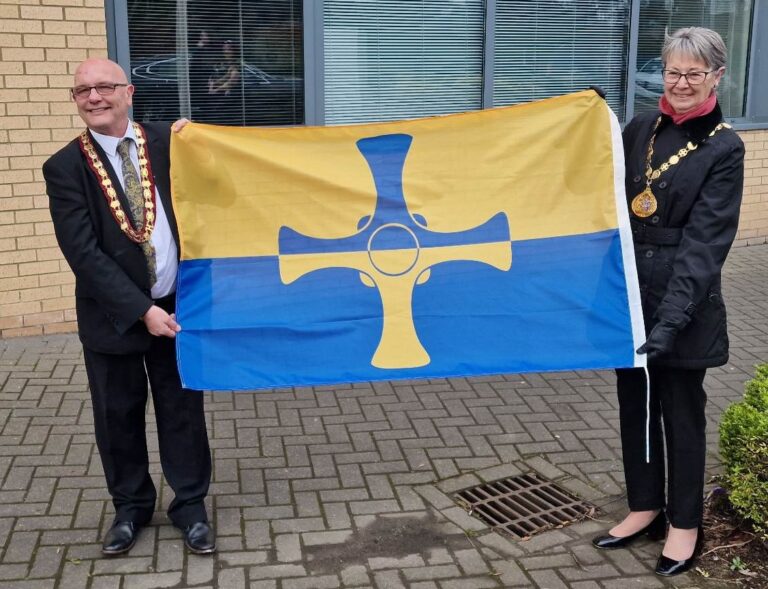


County Border Signs
Cllr Ross Patterson, the ceremonial mayor of Stockton-on-Tees for 2022/3, made the Historic Counties Trust (ABC’s charity arm) his chosen charity for his year in office. In total he raised £14,173 for the Trust, to be spent on historic county border signage. Negotiations are currently ongoing with North Yorkshire Council to see further county/ridings signs in their area. Work is also ongoing on a larger heritage fund bid for county signage.

In November we had great news from our friends the Somerset Guardians. The ‘Welcome to Somerset’ sign on the southbound M5 near Webbington has finally been removed. The sign has been a source of annoyance since it was first erected in 1974 by the former Somerset County Council at the boundary between its area and that of Avon County Council. The M5 actually enters Somerset where it crosses over the River Avon 25 miles to the north of where the sign was placed.

The former Somerset County Council was ruthless in portraying its area literally as Somerset and the highly misleading sign was a tiresome part of this. Fortunately the new unitary Somerset Council is, despite its name, taking a more sensible approach in not seeking to represent its area as the whole of Somerset. The new council promised to remove the offending road sign following lobbying from the Somerset Guardians and many other residents. It has now made good on that promise. Thanks are also due to Highways England. The Guardians’ next goal is to see the real county of Somerset marked where the M5 enters the county near Pill.
The Gazetteer of British Place Names
We celebrated the 25th birthday of the Gazetteer of British Place Names in 2023 by embarking on a major upgrade. The influence of the Gazetteer over the last 25 years in promoting the use of the historic counties as a standard general-purpose geography for Great Britain cannot be overstated. Many other publications, notably Britannica and the Office for National Statistics’ Index of Place Names in Great Britain, have adopted our approach of referring places to both their historic county and to current administrative areas. The key point here is to further the understanding that the historic counties are different entities to administrative areas. Whilst an administrative area is relevant is terms of the purpose for which it exists, the historic counties have a broader role in our history, culture and geography. Whilst Wikipedia continues to have a confused and confusing approach to UK geography, even here the influence of the Gazetteer can be seen with the increasing importance now being given to the historic county in town and village articles, even if the wording used still isn’t always ideal.
We always want the Gazetteer to be the best out here and our latest upgrade is meant to keep it at the top of the pile for online reference sources to British geography. Central to this is creation of a searchable map, with improved resolution mapping.
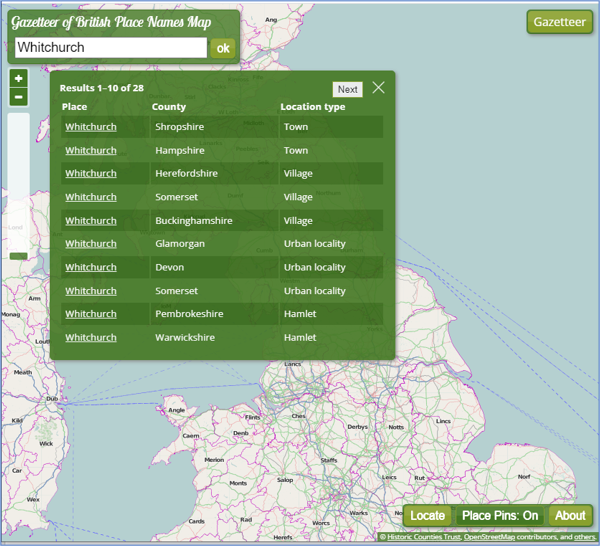
Clickable icons (‘pins’) for each type of entry (settlement, heritage site, woodland, lake etc.) enable brief details of the place to be viewed, along with a link to the full gazetteer entry.
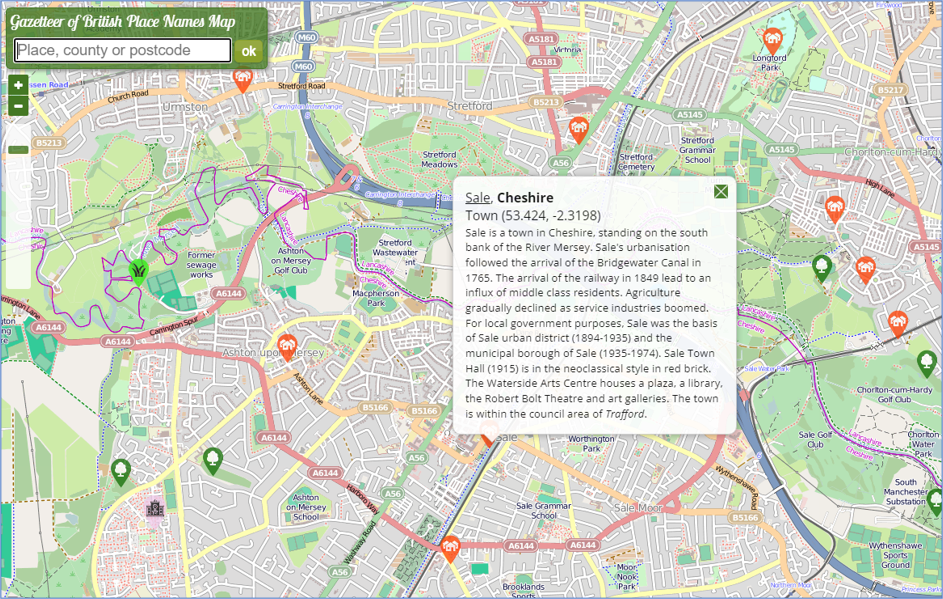
We have also added in mapping not just of the historic counties but of council areas, civil parishes and national parks.

We are also undertaking a major exercise in providing brief descriptions of each settlement and heritage site and undertaking a major exercise in improving the accurate of the coordinates for these. This last work is ongoing but should be completed in early 2024.
2023 Local Government Changes
On 1st April 2023, Cumbria County Council, Somerset County Council and North Yorkshire County Council and the district councils in their areas were abolished and replaced by several new unitary councils. ABC has no desire to see the historic counties used as the basis for administrative areas. On the contrary, ABC believes that the major challenge to the identities of our historic counties is the continued use of the term “county” within local government parlance and the continued misuse of historic county names by local authorities. ABC advocates a set of local government terminology and local authority names which draws a clear distinction between local government and the historic counties, to the benefit of both. In this context, there are some pros and some cons from the latest set of council changes.
The biggest positive is the end of Cumbria County Council. Cumbria County Council consistently fostered the identity of Cumbria as a county, strongly to the detriment of the identities of the historic counties in its area, which it made no effort to acknowledge or promote. Another big positive is that none of the new councils is to be called ‘county council’ but simply ‘council’. ABC’s ideal is that all local government areas in England and Wales should be known as ‘council areas’, as are those in Scotland,
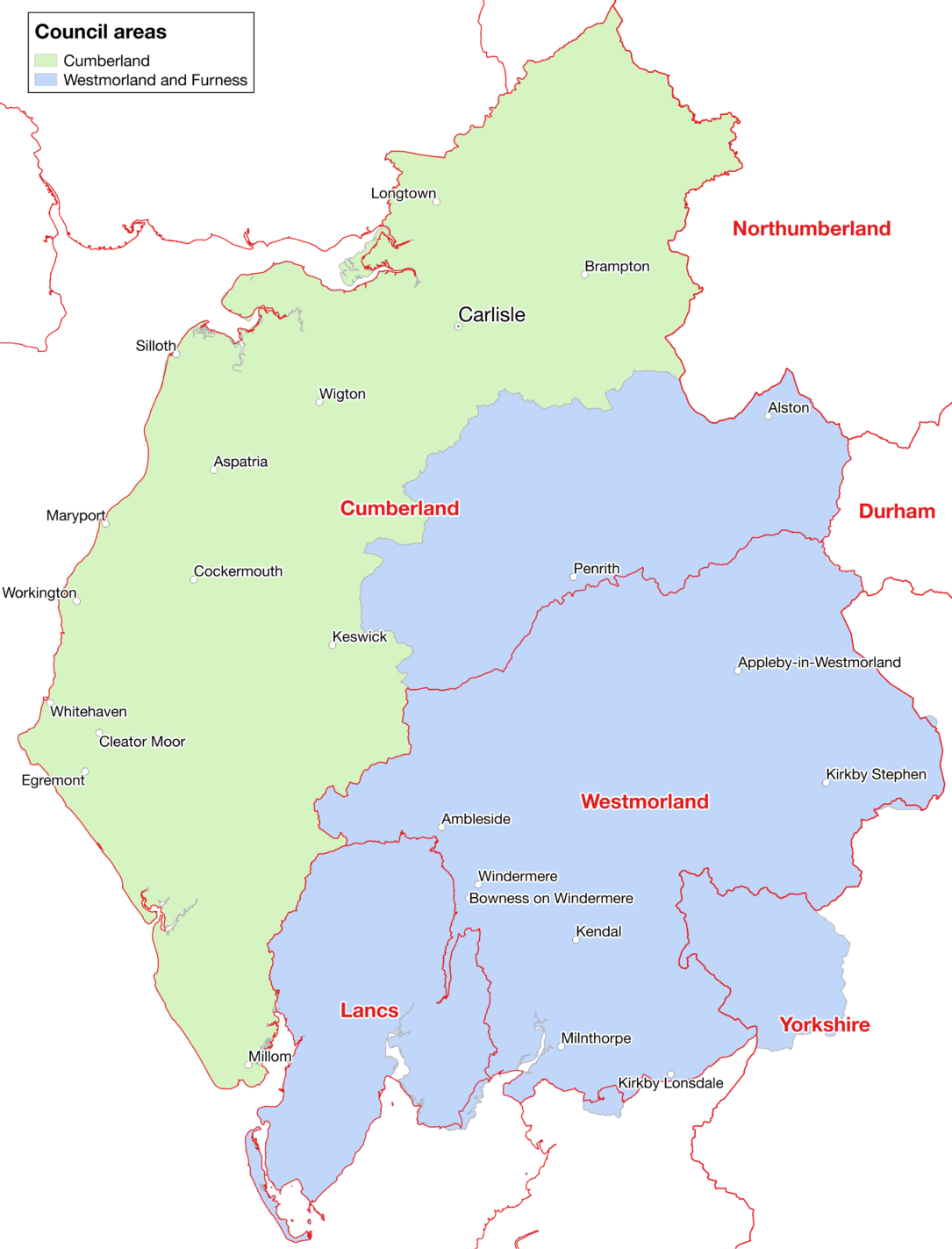
Less positive are the names chosen for the new councils. ABC opposes the unqualified use of an historic county name by a council unless that council area closely matches the historic county. The new Cumberland Council does not include 23% of the historic county, including Penrith and Alston. The new Westmorland and Furness Council does include the whole of Westmorland and the whole of the Furness area of Lancashire. However, 28% of the council area actually lies in Cumberland and 6% lies in the Sedbergh area of Yorkshire. Although the new Somerset Council area does cover 81% of the area of the historic county of Somerset, only 53% of the population of the historic county lies in the new council area.
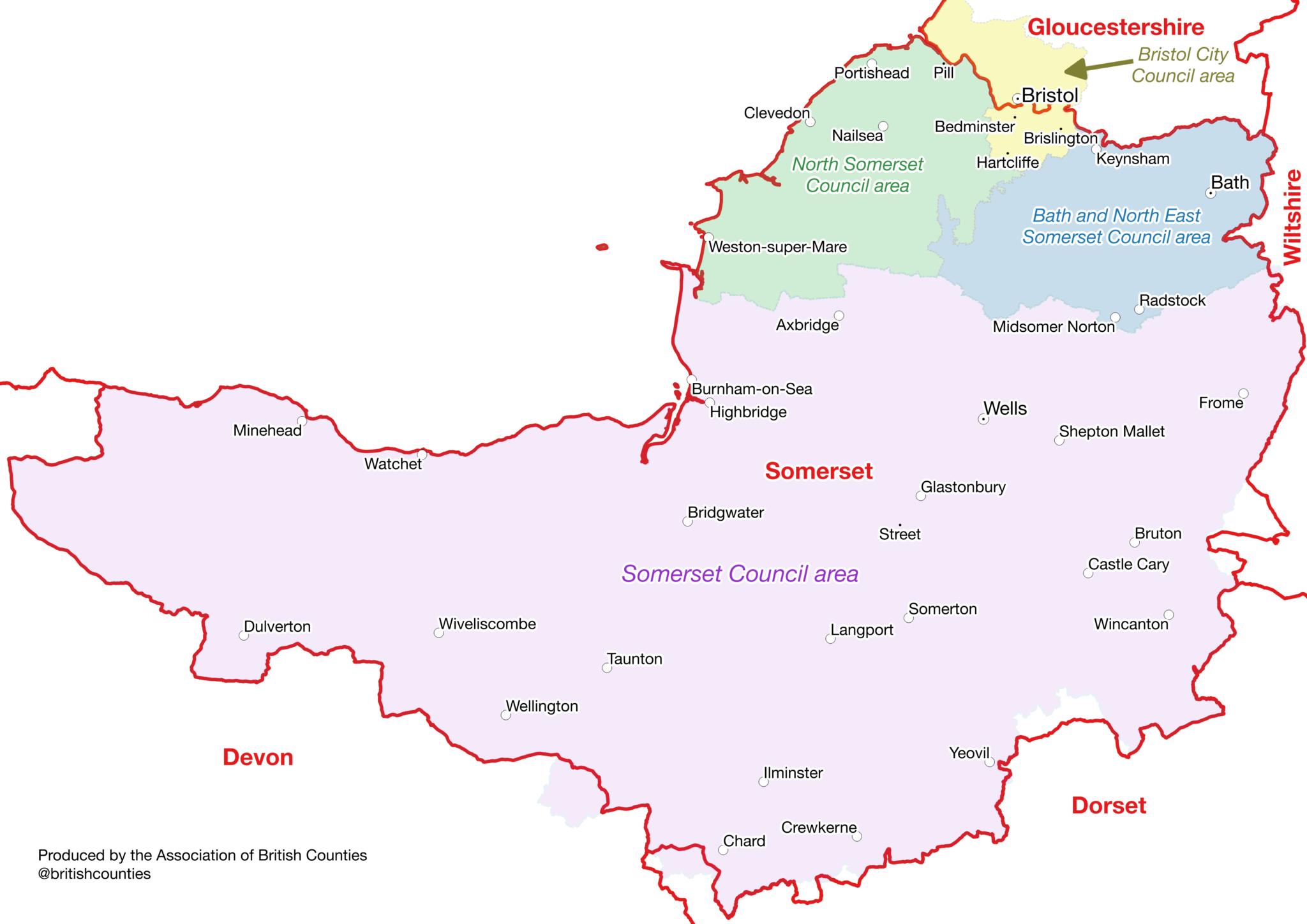
Unfortunately, rumours of the death of ‘Cumbria’ may have been exaggerated. The so-called ‘ceremonial county’ of ‘Cumbria’ will continue. The continuation of Cumbria Police will also give continued prominence to the name. The media’s obsession with ‘Cumbria’ also seems set to continue. Longer term, there is the distinct possibility that a ‘Cumbria’ combined authority will be formed with an elected ‘Mayor of Cumbria’. There is no intrinsic reason why combined authorities and elected mayors need pose any threat to historic county identities, provided they are not promoted as ‘counties’ and do not misuse county names. Sadly, to call one ‘Cumbria’, given the history of the use of this name, can only continue to undermine the identities of the historic counties of the area.
Cumbria County Council mistakenly believed that it could somehow literally become a county. Nearly fifty years of this nonsense didn’t stop its demise. The lesson for every council in this is not to seek to undermine the identities of the historic counties but to embrace them. There are easy ways to do this: fly the appropriate county flag from public buildings; join in each county day celebration; mark historic county borders with appropriate signage; make use of the historic counties in promoting tourism.

The Birth of the ‘Combined County Authority’
Unfortunately, 2023 was the year when the Government added a tiresome new use of the word ‘county’ into administration in England. The government has legislated to create a new form of combined authority, to be known as a ‘combined county authority (CCA)‘. Whereas combined authorities until now have been formed only in areas with unitary local government, the idea of the CCA is that the top-tier authority in two tier areas can form a combined authority with another top tier authority and/or unitary authorities. ABC has no view on this new structure of local government, but we object in the strongest possible terms to the word ‘county’ being used in the terminology!!!
In November 2023 the Government agreed a devolution deal in principle with the current Lancashire County Council and the unitary councils of Blackburn with Darwen Council and Blackpool Council to create the Lancashire Combined County Authority (CCA). To be clear, ABC has no view on the structure of local government. Our concern is that the terminology used for administration and names of administrative bodies and areas should avoid giving the impression that these administrative entities are in some way the ‘counties’. Clearly calling a new administrative body Lancashire Combined County Authority (CCA) is absolutely not what we want to see.
In fairness to the Government, it remains supportive of county days, county flags and the historic counties in general. However, it fails to see that the continued use of the word ‘county’ in administrative parlance and the misuse of county names for local government and ceremonial areas causes huge confusion and harms the historic counties. We will continue to make this point to Government directly, through our MP supporters and via the Historic Counties All Party Parliamentary Group.
Concluding Remarks
Our favourite picture of 2023 is this shot of the newly restored Four Shire Stone, undertaken and funded by local people (https://www.fourshirestone.org.uk). Many congratulations and thanks to them. Wonderful.

2023 was a busy year for everyone involved in the traditional county movement with many successes to celebrate. Here’s to 2024 🙂
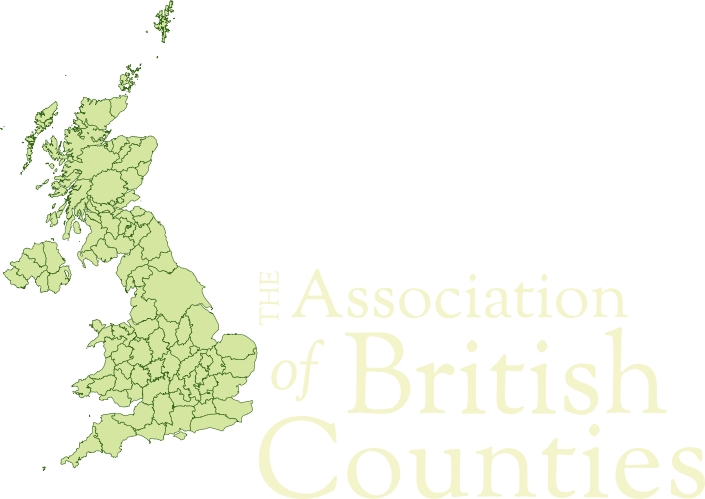
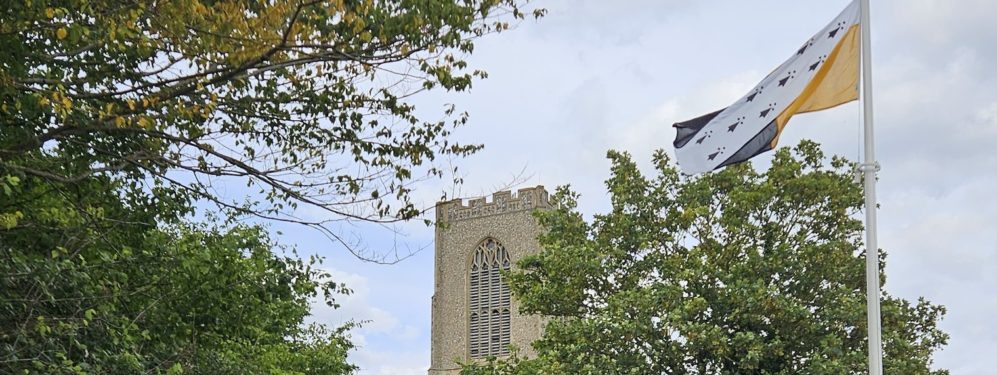
One thought on “2023: Historic County Highlights”
During this month (February 2024) for some unknown reason Royal Mail has re-introduced Avon, Dyfed and Cleveland where for some while it was using Gloucestershire/Somerset rather than Avon, Pembrokeshire for Dyfed and County Durham/North Yorkshire in Cleveland’s case. This is ridiculous.
Bad enough (as I predicted before during and after it happened) that Cumbria would be written on addresses by the great brainwashed masses more than ever (and then some – they LOVE Cumbria up there).
There’ll be celebrations all round Middlesbrough, Stockton and Billingham as the Royal Mail has taken off North Yks/ Co. Durham ( the Teessiders continued to write Cleveland anyway regardless of N.Yks/Co. Durham) and given them back their Hill To Die On ” Cleveland”…
Funny how they are inconsistent and haven’t re-introduced Humberside….. they have an agenda but no one (including themselves) knows quite what it is.
As for me, in protest to make a point I am saying Northumbria instead of Northumberland and see what happens.